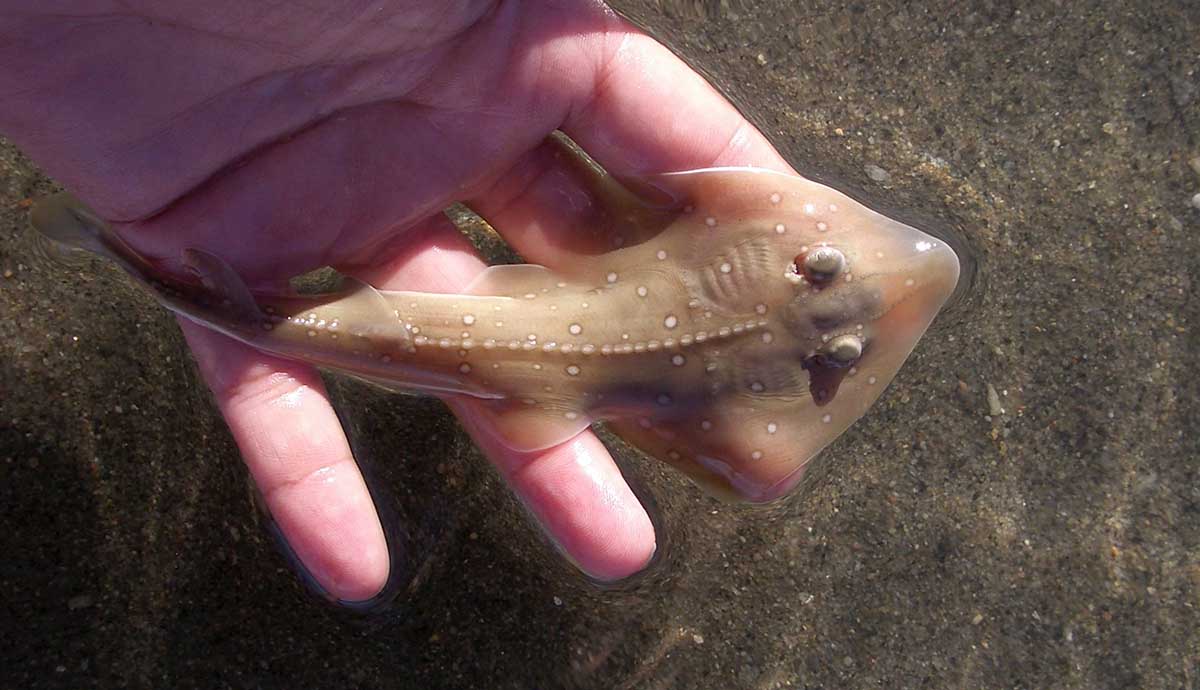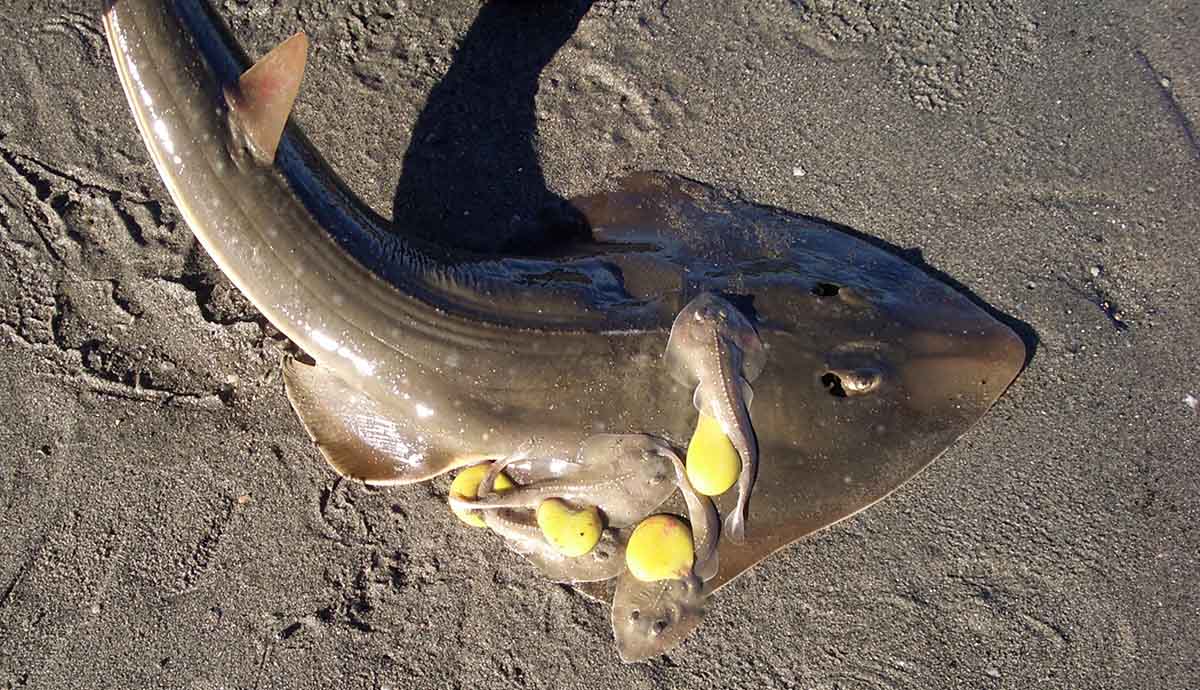November 2, 2017
Shark and ray populations at greater risk than thought
Pregnant sharks and rays abort offspring when caught
Endangered shark and ray species are at greater risk from human activity than previously thought, a paper by University of Wollongong (UOW) researchers published in the journal Biological Conservation has found.
While the direct impacts of fishing on sharks and rays are well established, the researchers document an indirect and largely unreported effect of fishing: pregnant sharks and rays aborting their pups when caught in nets or on fishing lines.
The researchers found instances of abortion across 88 different shark and ray species, with an average of 24 per cent of pregnant females aborting when captured. Pelagic stingrays had the highest recorded frequency, with 85 per cent of pregnant females aborting their young when captured.
The researchers looked at all species of chondrichthyans (sharks, rays, skates and chimeras) but only found records of abortions occurring among live-bearing sharks and rays. Around 60 per cent of shark species and all rays bear live young.
Sharks and rays are among the slowest growing and oldest maturing vertebrate animals, and have some of the longest gestation periods in the animal kingdom, so the loss of pups has serious implications, particularly for species that are threatened or vulnerable to overexploitation.
Incidents of sharks and rays aborting when caught have long been reported on, but the researchers could find no scientific studies that focussed specifically on the phenomenon and its implications for species’ numbers.
The paper’s lead author, UOW PhD student Kye Adams (pictured above) from the School of Biological Sciences, said the researchers trawled through the scientific literature to find mentions of premature births or abortions among sharks and rays – most commonly as a side effect of net or line fishing activities. They also searched through social media postings for similar mentions.
“I came across the phenomenon when I was studying the effects of fishing on sharks and rays but couldn’t find any targeted research on why it occurs and in which species. This is despite the first observation of an abortion in a shark or ray being 200 years ago,” Mr Adams said.
“Sharks and rays invest heavily in reproduction so if they lose their pups due to an abortion event then it's really costly for the mother. Some species only give birth every two or three years, so that’s a loss of two- to three-years’ worth of investment in those pups.
“Species that are in danger, such as sawfish and angel sharks, need all the recruitment they can get to replenish populations, so it’s a real issue.”
The phenomenon has been observed in the wild, such as when sharks or rays have been attacked by a predator or beached, and is thought to be an adaptive strategy.
“Given that sharks are more than 300 million years old, it's probably evolved as a survival strategy,” Mr Adams said.
“Either the mother gives birth to help her escape predators – so the predator eats the pups instead of her and she can go on to have more pups in the future – or alternatively she self-sacrifices for her pups and gives birth so that they might survive.
“We're not sure which it is, but we suspect it's not just in response to fishing – it's a general response to stress that fishing happens to trigger.”
 A Nigerian guitarfish that has been born prematurely. Picture: Kolette Grobler
A Nigerian guitarfish that has been born prematurely. Picture: Kolette Grobler
Mr Adams said fishers weren’t the only ones inducing these events; many marine biologists were unaware of the issue and had also induced abortions when capturing sharks and rays for studies.
“It's in the scientific community as well – we're not exempt from the lack of knowledge,” he said.
“One of our recommendations is that researchers conduct their procedures without removing the animal from the water, especially for larger species. For endangered species, researchers should avoid sampling in periods or areas where females are pregnant.”
Raising awareness about the issue among the scientific and fishing communities was the logical first step towards a reduction in abortions, Mr Adams said, while for those species most at danger, closing known pupping or nursery areas to fishing at certain times of the year could also mitigate risk.
“A lot of these species are protected. If you capture a sawfish, for example, you're meant to release it but that act of capture could result in an abortion event, so in the article we explore ways of mitigating the event.
“If you do capture a shark or ray and suspect they might be pregnant – and a lot of time it’s obvious because they're so fat – the best thing to do is leave it in the water. Don't try and remove it, just cut the line as close to its mouth as you can and minimize handling time.
“Another option – not for all species, just for those that are most in danger – is seasonal or spatial closures of fishing around pupping or nursery areas.”
This research was conducted with the support of the Seaworld Research and Rescue Foundation, the Holsworth Wildlife Research Endowment, the Linnean Society of NSW Vickery Scientific Research Fund and the Australian Government Research Training Program Scholarship. The researchers also acknowledge in-kind support from the NSW Department of Primary Industries.
 A Nigerian guitarfish with pups it aborted after being caught. Picture: Kolette Grobler
A Nigerian guitarfish with pups it aborted after being caught. Picture: Kolette Grobler
:format(jpg)/prod01/channel_3/assets/live-migration/www/images/content/groups/public/web/media/documents/mm/uow239949.jpg)